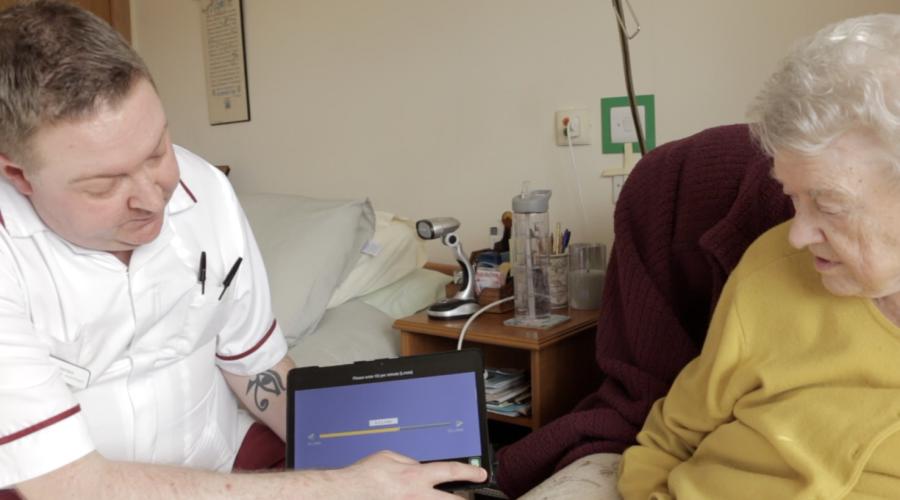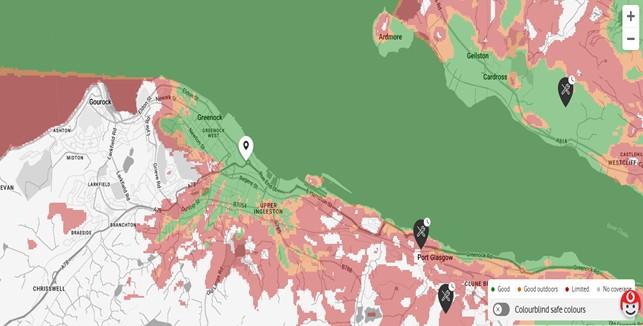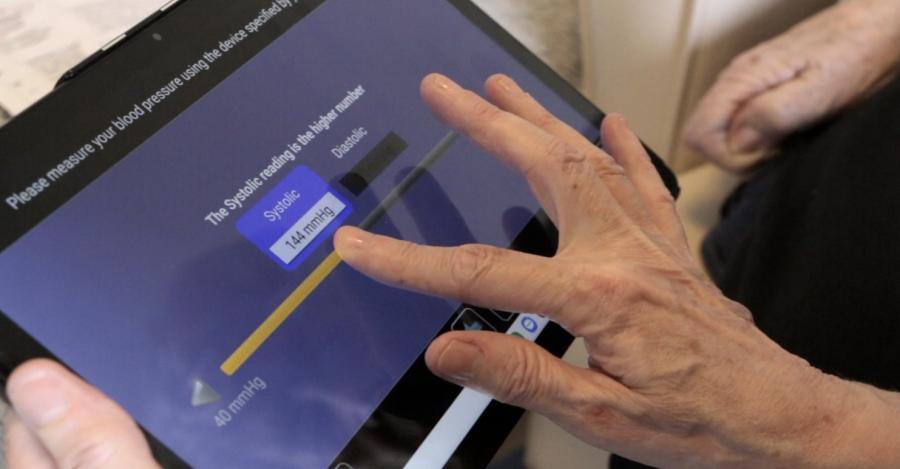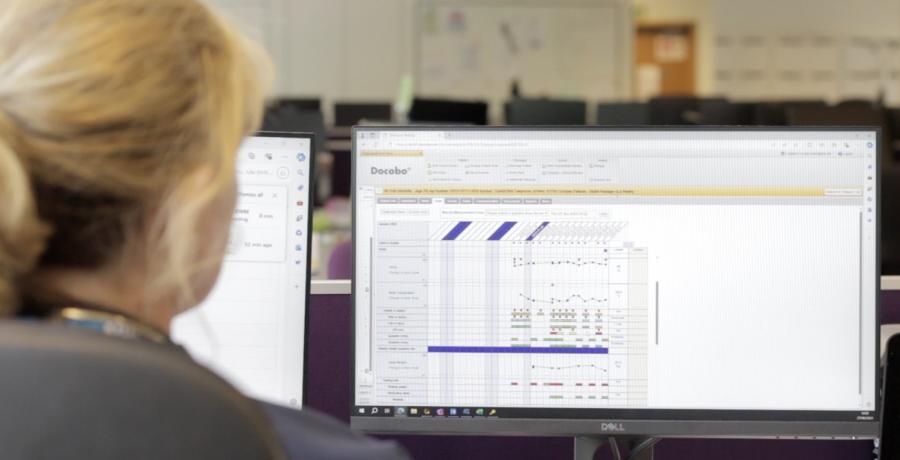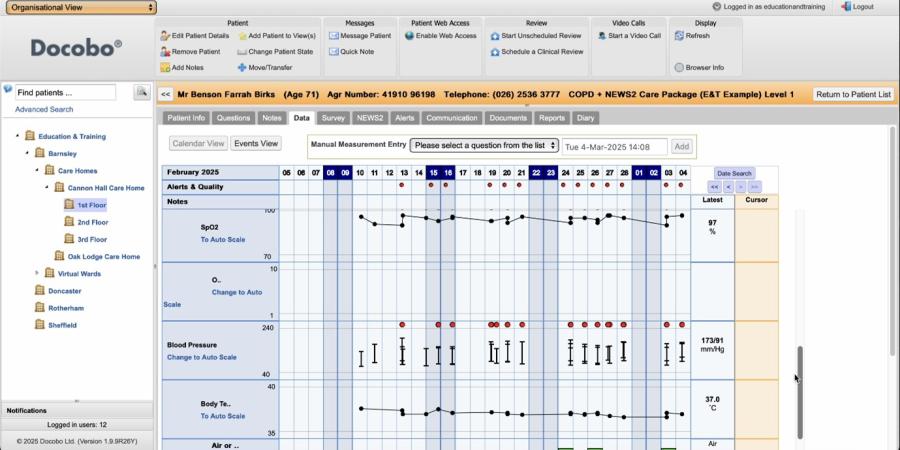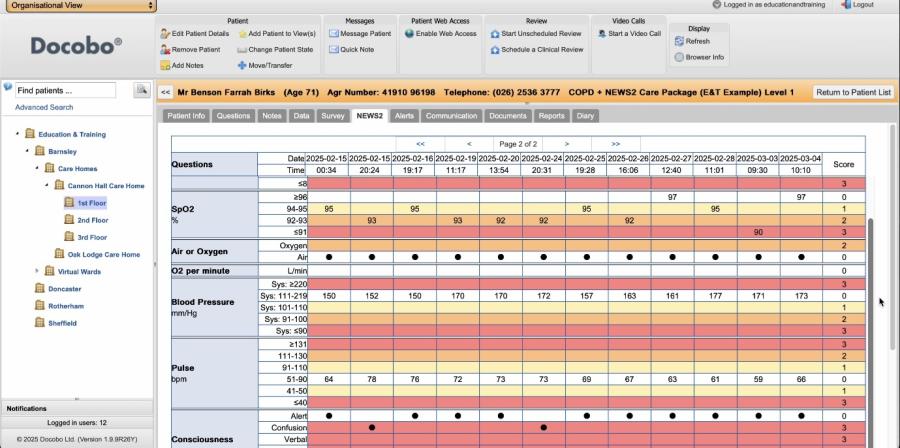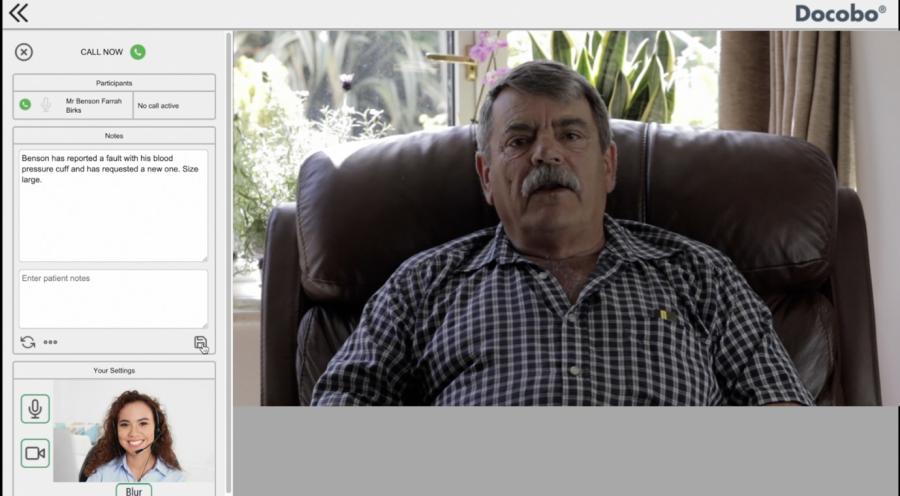Docobo Ltd - Glasgow City Region
Enhancing Rural Patient Monitoring with 5G in Inverclyde, I-FIVE uses 5G connectivity to enhance rural monitoring and video consultations for patients with long-term conditions at home and in care homes across Inverclyde, Glasgow City Region.
Funded by the Department of Science Innovation and Technology (DSIT) as part of the 5GIR programme, Glasgow City Region (GCR) utilised circa £750,000 to develop an innovation scheme, ensuring rapid outcomes within an 8-month period across the 5G Glasgow City Region (GCR) between September 2004 and March 2025. As part of the Smart and Connected Social Places Program, the Docobo innovation project, I-FIVE aims to demonstrates how 5G connectivity can improve rural patient monitoring for individuals with chronic conditions in Inverclyde.
Building on a decade of successful telehealth delivery, the project introduced enhanced video-enabled monitoring for 20 community-based COPD patients and two local care homes supporting up to 120 residents. In the I-FIVE Project, Docobo Ltd (a wholly owned subsidiary of Graphnet Health) In partnership with Inverclyde HSCP, tested the impact of 5G-enabled tablets and remote care pathways to extend access, reduce avoidable hospital admissions, and improve care outcomes in both community and residential care home settings.
The pictures below show patients using the devices in both Community and Care Home settings.
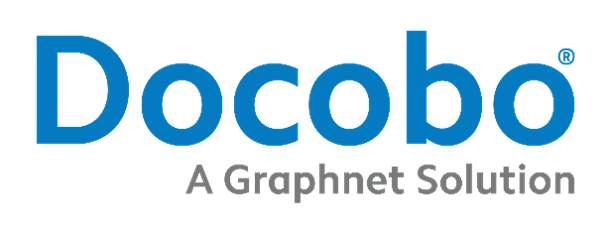
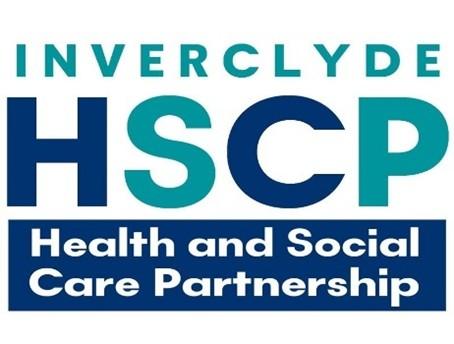
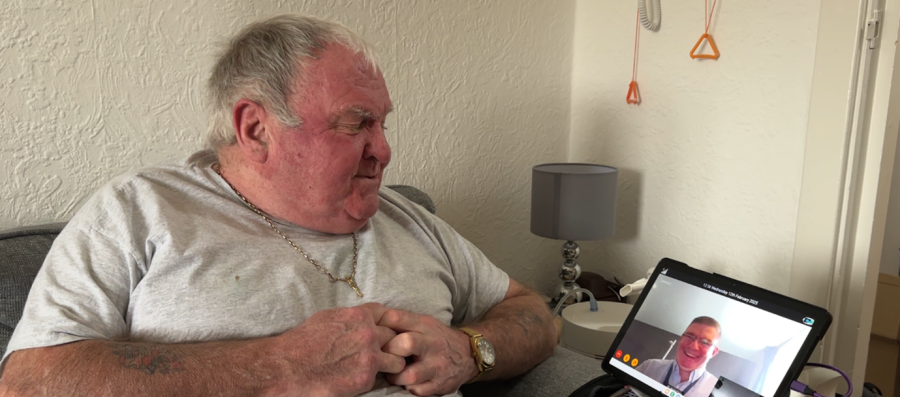
Community based COPD Patient using the 5G enabled Tablet Device in Video Call
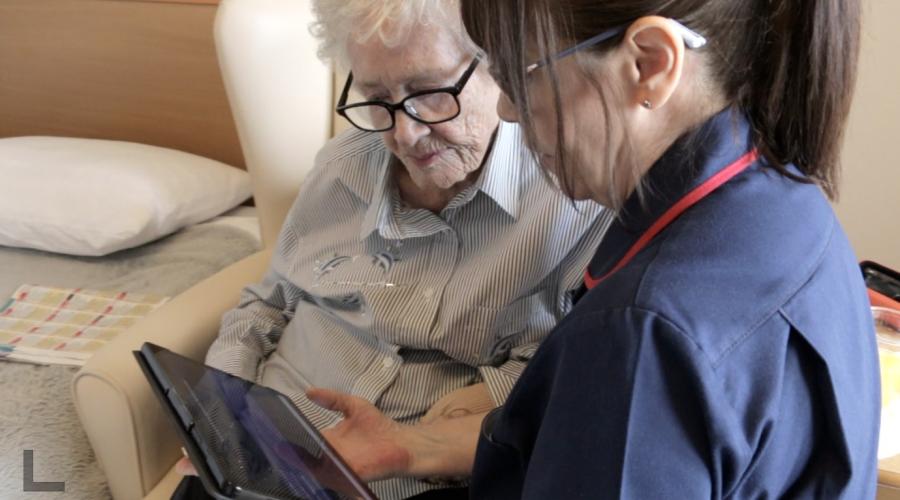
Care Home Patient being assisted by Care Staff to capture the Patient Data
What is the Problem to be solved?
Who is the case study aimed at?
This case study is intended for NHS leaders, local authorities, care home operators, and digital transformation professionals across health and social care. It is particularly relevant to decision-makers aiming to reduce health inequalities and address long-term condition management in rural and deprived areas.
What is the solution to the problem?
The I-FIVE project deployed 5G-enabled remote monitoring using Docobo’s DOC@HOME platform and patient-facing DocoboAPP, installed on the 5G Tablet Device combined with medical-grade peripheral devices (blood pressure, SPO2, temperature monitors). The solution allowed both community patients and care home residents to submit vital signs and symptomatic data, triggering clinician review and enabling video consultations in response to alerts.
Commercial model (Business Case)
The I-FIVE project offers a scalable, cost-effective model for digital healthcare delivery using 5G-enabled remote patient monitoring. It provides both short-term efficiencies and long-term savings by reducing avoidable hospital admissions, emergency callouts, and routine GP visits.
Benefits
The I-FIVE project has demonstrated a wide range of benefits for patients, clinicians, care staff, and the broader health and social care system. These include:
Digital inclusion:
- Patients and care homes without prior access to remote monitoring have now been engaged with easy-to-use digital tools.
- Patient Information videos concerning the patient’s condition and Self-Care Advice are delivered through the 5G Tablet, with updates and new content being able to be uploaded more quickly.
Lessons Learnt
Do's
- Do build on trusted partnerships. The long-standing relationship between Docobo and Inverclyde HSCP was vital in delivering the project at pace and ensuring clinical buy-in.
- Do plan for diverse settings. Anticipate the technical challenges of 5G in older buildings and signal-poor areas, use cellular modems or alternative Wi-Fi boosters to extend coverage.
- Do invest in training and digital onboarding. Both care staff and older patients benefitted from structured, supportive training to build confidence in using the technology.
- Do embed tools like RESTORE2 and NEWS2. These enhance clinical decision-making and empower care home staff to escalate issues appropriately and efficiently.
- Do capture patient and carer stories. First-hand feedback added powerful qualitative insights that helped validate impact and strengthen stakeholder support.
- Do collaborate with network providers early. Vodafone’s proactive involvement enabled faster fixes and antenna adjustments to extend coverage.
- Do ensure a multi-phase rollout. Phased implementation allowed time for technical testing, staff training, and live monitoring, with scope to gather feedback before full deployment.
Don’ts:
- Don’t assume all devices are pre-approved. An Android version mismatch on Samsung tablets required rapid re-certification of the Docobo app, causing initial delays.
- Don’t overlook device interaction with enterprise security tools. Knox security integration created unexpected compatibility issues that needed urgent resolution.
- Don’t rely solely on in-building 5G. Many buildings, especially in older communities, are constructed in ways that block signal, plan for Gigacube or Pico-cell solutions where needed.
- Don’t underestimate the variation in adoption speed. Care homes adopted the technology at different rates, tailored support and continuous engagement were essential to build momentum.
- Don’t delay gathering qualitative feedback. Early patient and carer surveys, including PROMs and PREMs, informed real-time refinements and supported the sustainability case.
If you’re ready to embark on a connectivity project, we can point you to the suppliers with expertise in your sector.

